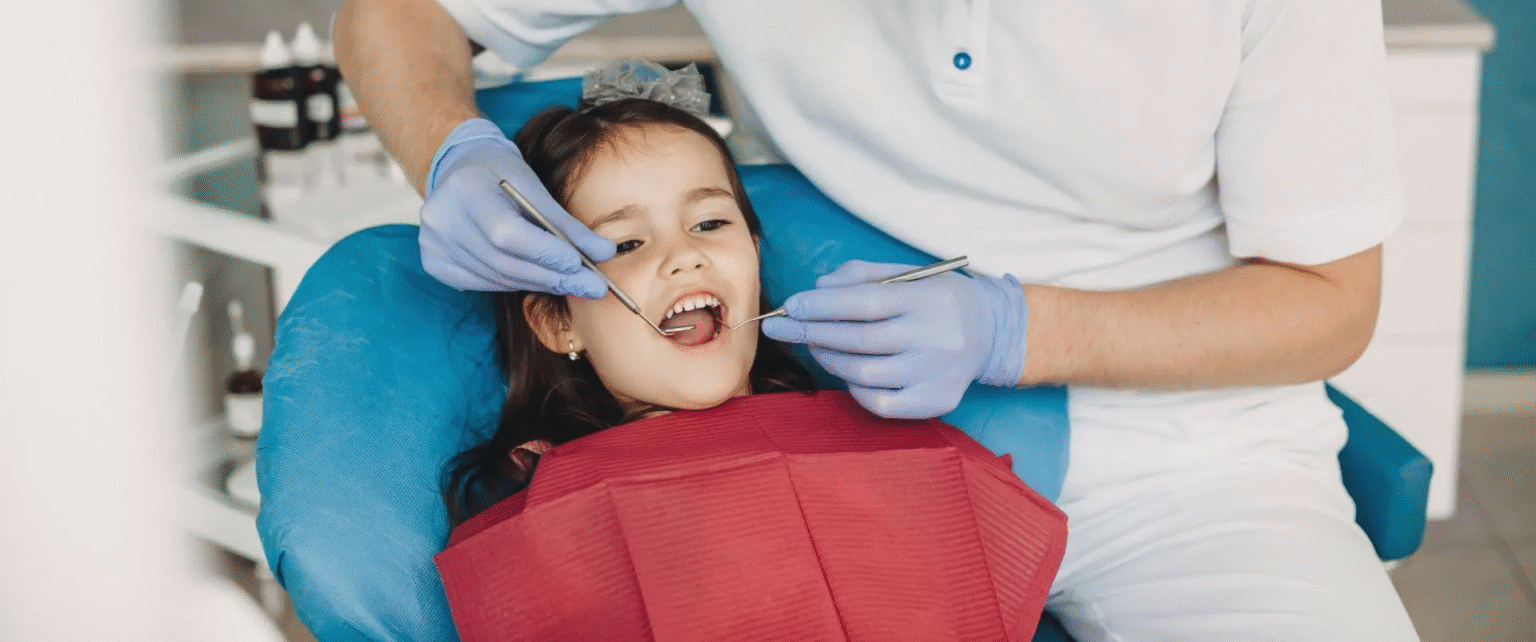Visiting the dentist can be a source of anxiety for many children. The unfamiliar sights, sounds, and sensations often make them nervous or scared. Pediatric dentistry for anxious children focuses on creating a calming and supportive environment. With child-friendly techniques, experienced pediatric dentists, and gentle communication, children can receive the dental care they need without fear. This approach not only ensures oral health but also helps children build a positive attitude toward dental visits for life.
Understanding Dental Anxiety in Children
Dental anxiety in children is more common than many realize. It can stem from fear of pain, past negative experiences, or simply the unknown. Some children may cry, refuse to sit in the chair, or show signs of distress even before entering the clinic. Recognizing these signs early is crucial. Pediatric dentists are trained to identify anxiety triggers and respond with patience and compassion.
The Role of a Pediatric Dentist
A pediatric dentist specializes in treating children from infancy through their teen years. These professionals receive additional training focused on child psychology, behavior management, and sedation techniques. Their offices are often designed to be bright and welcoming, featuring toys, cartoons, and friendly staff to ease children’s fears. The goal is to make the dental experience as enjoyable and stress-free as possible.
Creating a Child-Friendly Environment
The environment plays a key role in calming anxious children. Pediatric dental clinics often use themed decor, colorful murals, and waiting areas with books and games. The dental chair might even be shaped like an animal or spaceship. This playful setting helps distract children from fear and promotes relaxation. Soothing music or calming scents like lavender are also used in some clinics.
Behavioral Techniques to Reduce Anxiety
Pediatric dentists use various behavioral techniques such as “Tell-Show-Do,” where the dentist first explains the procedure, shows the tools in a non-threatening way, and then gently performs the treatment. Positive reinforcement through praise or small rewards like stickers also encourages cooperation. Distraction methods, including video goggles or storytelling, can shift the child’s focus from fear to entertainment.
Parental Involvement and Support
Parents play a significant role in reducing a child’s dental anxiety. Preparing the child before the appointment with positive language, avoiding words like “pain” or “shot,” and remaining calm themselves can make a big difference. Some pediatric dentists encourage parents to stay in the room during treatment, while others find that children behave better independently. The choice depends on the child’s needs and the dentist’s approach.
Using Sedation Dentistry When Necessary
In some cases, behavioral methods alone may not be enough. For highly anxious or special needs children, sedation dentistry can be a safe and effective solution. Options include nitrous oxide (laughing gas), oral sedation, or IV sedation, depending on the procedure and the child’s anxiety level. Pediatric dentists are specially trained to use these methods with caution and care.
Building Trust Through Regular Visits
Establishing a dental routine early helps build trust and reduce anxiety over time. Regular checkups allow the child to become familiar with the environment, staff, and procedures. These visits often include simple cleanings and exams, helping to normalize dental care. With each positive experience, the child gains more confidence and is less likely to fear future visits.
Importance of Communication and Empathy
Empathetic communication is key in pediatric dentistry for anxious children. Dentists use age-appropriate language, answer questions patiently, and validate the child’s feelings. They avoid rushing procedures and focus on building rapport. This supportive approach reassures children that their comfort is a priority and that they are safe.
Preventive Care to Minimize Treatments
Focusing on preventive care reduces the need for invasive procedures, which can be more anxiety-inducing. Pediatric dentists educate parents and children on proper brushing, flossing, and diet habits. Fluoride treatments and dental sealants are also used to protect against cavities. By preventing problems before they start, children face fewer appointments that might trigger fear.
When to Seek Help from a Specialist
If a child’s anxiety is extreme or persistent despite regular visits and gentle care, it may be time to seek help from a specialist. Pediatric dentists may work with child psychologists or offer referrals to clinics with advanced sedation services. Addressing dental anxiety early prevents it from becoming a lifelong issue and ensures the child receives necessary care.
Conclusion
Pediatric dentistry for anxious children blends clinical skill with compassion and creativity. Through child-friendly environments, empathetic care, and family involvement, dentists can turn fear into comfort and stress into smiles. By prioritizing trust and understanding, pediatric dental professionals lay the foundation for a lifetime of healthy dental habits and positive experiences.
FAQs
What causes dental anxiety in children?
Fear of pain, unfamiliar settings, or past negative experiences are common causes.
How can I help my child prepare for the dentist?
Use positive language, stay calm, and explain what to expect in a reassuring way.
Is sedation safe for children?
Yes, when administered by trained pediatric dentists, sedation is safe and effective.
Can dental anxiety go away with time?
Yes, regular positive dental visits help reduce anxiety and build trust over time.
Should parents stay in the room during treatment?
It depends on the child and dentist’s recommendation; some children feel safer with parents present.
